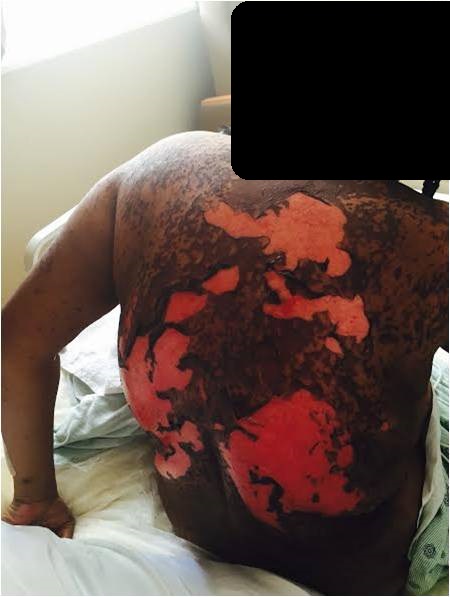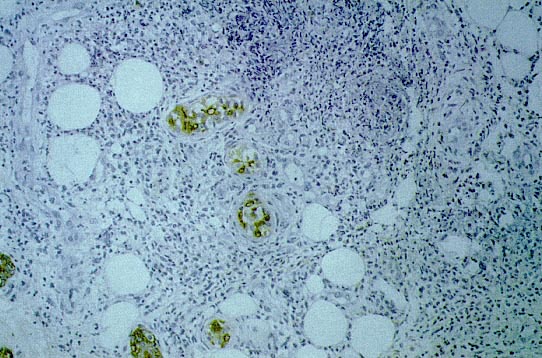Presenter: Liza Brown, DO, Francisco Kerdel, MD
Dermatology Program: Larkin Community Hospital (LCH/NSU-COM)
Program Director: Stanley Skopit, DO, MSE, FAOCD
Submitted on: October 1, 2015
CHIEF COMPLAINT: Generalized “rash”
CLINICAL HISTORY: The patient is a 33-year-old female with a past medical history significant for asthma and bipolar disorder, who presented to Larkin Hospital dermatology service as a direct transfer for a “generalized rash”. Upon questioning, the patient stated she was started on Lamictal July 13, 2015, for her bipolar disorder. Two weeks after starting Lamictal patient reported developing angioedema and went to an ER near her home. She was given epinephrine and IV steroids with mild relief and was discharged home at that time. August 2, 2015 patient went back to the ER after the development of new symptoms; a generalized targetoid rash that began cephalad and extended caudally. The patient was admitted for three days and then was transferred to Larkin Community Hospital on August 5, 2015, after she began having sloughing of skin and dysphagia. Complete review of systems was within normal limits other than mentioned previously. The patient denied previous drug allergies, other new medications, or recent travel.
PHYSICAL EXAM:
Multiple scattered dusky hyperpigmented annular macules from head to toe with few bullae present over the anterior and posterior trunk, upper extremities, and face; Nikolsky +. Denudation of skin on back with sloughing present on face and chest as well.
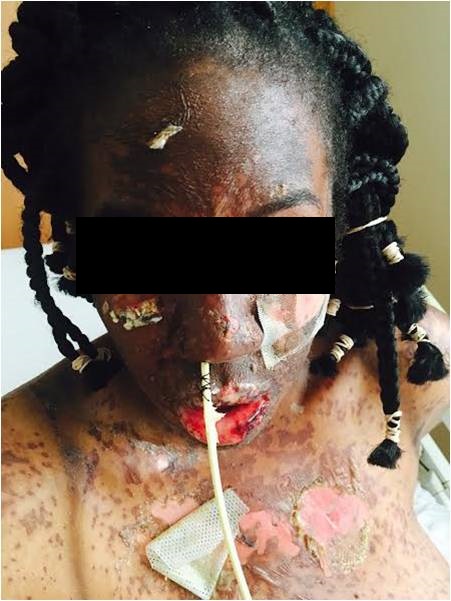
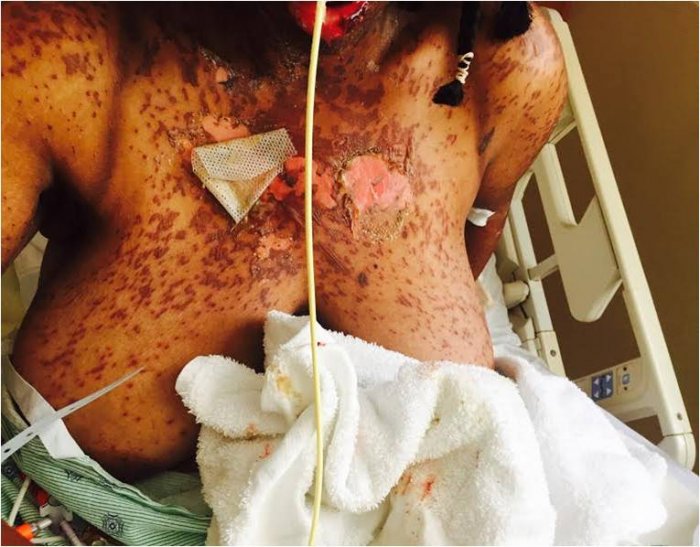
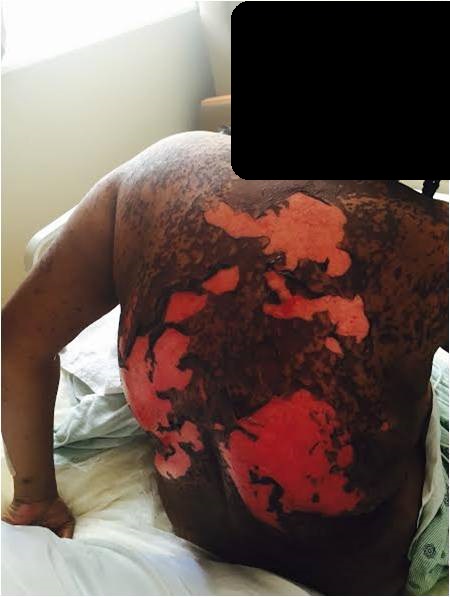
LABORATORY TESTS:
Labs on admission August 5, 2015 :
Vital signs: 98.6 F , HR 72, RR 20, BP 119/69
Wbc: 5.0 x103/µL
Hgb: 10.7 mg/dL
HCT: 33%
PLT: 350 x109/L
Na: 132 mEq/L
K: 3.3 mEq/L
Cl: 97 mEq/L
HCO3: 31 mEq/L
BUN: 13 mg/dL
Cr: 0.3 mg/dL
Glucose: 78 mg/dL
AST: 10 IU/L
ALT: 23 IU/L
Albumin: 2.8 g/dL
HIV, Syphilis, Hepatitis testing all negative
DERMATOHISTOPATHOLOGY:
Clinical diagnosis- No biopsies taken.
DIFFERENTIAL DIAGNOSIS:
1. Toxic Epidermal Necrolysis
2. Stevens-Johnson Syndrome
3. Staphylococcal Scalded Skin Syndrome
4. Acute Generalized Exanthematous Pustulosis
5. Linear IgA Bullous Dermatoses

